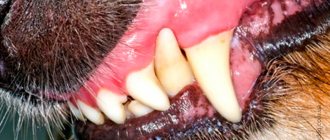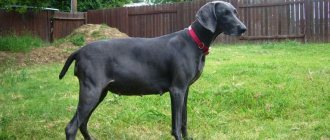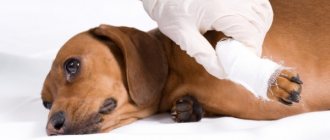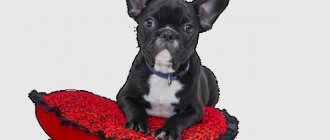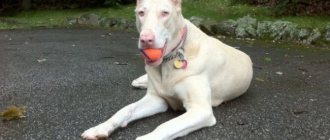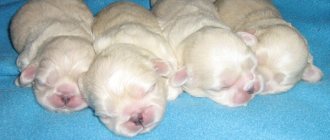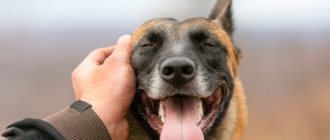They say that Yuri Gagarin, after his flight, at some banquet, uttered a phrase that became printed only in our time. “I still don’t understand,” he said, “who I am: “the first man” or “the last dog.” What was said was considered a joke, but, as you know, there is some truth in every joke. The road to space for Yuri Gagarin was paved by... dogs.
Yuri Gagarin and Sergei Korolev
Near-Earth orbits were inhabited by them. They barked at humanity from above and froze in shock. There are few dog names associated with space that remain in our memory...
Four-legged celebrities
In the early sixties, there were no more popular dogs in the world than the Soviet mongrels Belka and Strelka. Still would! For the first time, they managed to fly around the planet for more than a day in a real spaceship and return home safe and sound!
The fame of the two mongrel dogs was so great that one of Strelka’s puppies, the curly-haired Pushka, was sent overseas, on the personal orders of Nikita Khrushchev, to the wife of American President John Kennedy, the beautiful Jacqueline, as a souvenir. Apart from several dozen specialists, no one at that time knew: in order for Belka and Strelka’s flight to be a success, eighteen dogs’ lives were lost.
Commemorative stamp in honor of the 50th anniversary of the flight of Belka and Strelka
Sergei Pavlovich Korolev began to find out how a living creature would survive a rocket flight almost immediately after Soviet factories managed to reproduce a captured fascist weapon - the Wernher von Braun (V-2) rocket. They took dogs as experimental subjects: Russian physiologists had long used them for experiments, knew how they behave, and understood the structural features of the body. In addition, dogs are not capricious and are easy to train.
How it was?
0
See all photos in the gallery
Its weight was about half a ton, it looked like a conical capsule 4 meters high, contained several compartments for scientific equipment, a radio transmitter, a telemetry system, a software module, a regeneration system and cabin temperature control.
0
The main thing was that Sputnik 2 carried the first living creature in the world to make an orbital flight - the dog Laika. It should be noted that preparations for the launch of Sputnik 2 were carried out in an extremely intensive mode. The head of the USSR, Nikita Khrushchev, having appreciated the political dividends from the launch of the first satellite, sought to squeeze the maximum out of space successes. That is why the launch of Sputnik 2 was timed to coincide with the 40th anniversary of the Great October Socialist Revolution. Laika's flight was supposed to answer a fundamental question: can a living creature survive in the orbit of a planet in a state of weightlessness.
×
First squad
The first group of dogs—candidates for space flights—were recruited in the gateways. These were ordinary ownerless dogs. They were caught and sent to a nursery, from where they were distributed to research institutes. The Institute of Aviation Medicine received dogs strictly according to specified standards: no heavier than 6 kilograms (the rocket cabin was designed for light weight) and no higher than 35 centimeters in height.
Why were mongrels recruited? The doctors believed that from the first day they were forced to fight for survival, moreover, they were unpretentious and very quickly got used to the staff, which was tantamount to training. Remembering that the dogs would have to “show off” on the pages of newspapers, they selected “objects” that were more beautiful, slimmer and with intelligent faces.
Space pioneers were trained in Moscow on the outskirts of the Dynamo stadium - in a red-brick mansion, which before the revolution was called the Mauritania Hotel. In Soviet times, the hotel was located behind the fence of the military Institute of Aviation and Space Medicine. The experiments carried out in the former apartments were strictly classified.
Memory for centuries
Successful flights and the tragic fate of the dogs attracted the attention of the people and other countries. The whole world has immortalized dog heroes in cinema, music and works of literary art, later in cartoons and computer games, their images appeared on stamps and company logos. Monuments to cosmonaut dogs were erected on the territory of the former USSR and several powers that actively followed the research.
Dezik and Gypsy
The first dog race took place on July 22, 1951 at the Kapustin Yar training ground.
Rocket R-1
...Four in the morning. A gray dawn breaks over the dry steppe. But there is no sign of the silence required for such an early hour. Engineers are swarming around the pot-bellied rocket (R-1), stuck into the cement plate of the launch pad.
The authorities surrounded two dogs - Desik and Gypsy, they will have to take a place at the very top of the formidable structure. The mongrels are dressed in special suits that help keep sensors on their bodies, and are fed stewed meat, milk and bread. Decisive Korolev in a fashionable jacket with padded shoulders takes the arm of the head of the medical program, Vladimir Yazdovsky:
Dezik and Gypsy before the start
“You know, what if dogs don’t listen to someone else’s hands?” I'm a superstitious person, climb it yourself!..
Yazdovsky and mechanic Voronkov climb to the top - to where the cockpit hatch is open. They are served dogs already placed in special trays. Locks click. Yazdovsky runs his hand over the dogs’ faces in farewell: “Good luck!” The sun's rays are already visible breaking through the horizon. At these moments, the air is especially clean and transparent, which means that the rocket soaring up will be clearly visible. Start.
About fifteen minutes later, a serene white parachute is visible on the horizon. Everyone rushes to the landing site of the container with the dogs, looks out the window: alive! alive!…
Probably, it was on that day that the fate of manned astronautics was decided - living beings could fly on rockets!
First victims
A week later, during the second test, Dezik and his partner Lisa died - the parachute did not open. This is how the mournful list of space victims was discovered.
At the same time, it was decided not to send Desik’s partner, Gypsy, on the flight anymore, but to preserve it for history. The dog was warmed up at home by the Chairman of the State Commission, Academician Blagonravov. They say that the first four-legged traveler had a stern disposition and until the end of his days was recognized as the leader among the surrounding dogs. One day the vivarium was inspected by a respectable general. The gypsy, who had the right to walk around the premises at any time, did not like the inspector, and he pulled him by the stripe. But the general was not allowed to kick the little dog in response: after all, he was an astronaut!
Tsigan and Desik
In total, from July 1951 to September 1962, 29 dog flights took place into the stratosphere to an altitude of 100–150 kilometers. Eight of them ended tragically. The dogs died from depressurization of the cabin, failure of the parachute system, and problems in the life support system. Alas, they did not receive even a hundredth of the glory that their four-legged colleagues who were in orbit covered themselves with. Even if posthumously...
However, despite the secrecy, the security services carefully monitored political correctness. Among the testers was a dog named Marquise. When it was her turn to go up, her superiors demanded that she change her nickname, in case some real marquise found out and was offended! An international scandal will emerge. The marquise was renamed White.
Laika
And the first “declassified” dog was the mongrel Laika. After 1957, when the first artificial Earth satellite was launched into orbit, Khrushchev demanded from Korolev the next, no less spectacular launch. The chief designer decided to send a dog on the second satellite. It was clear that this was a kamikaze: at that time they did not yet know how to return a ship from a space flight. Of the dozen trained, the “testers” first selected three - Albina, Laika and Mukha.
“Albina has already flown twice and has served science well,” Vladimir Ivanovich Yazdovsky told me. “Plus, she had funny puppies.” We decided to feel sorry for her.
Two-year-old Laika was chosen as the cosmonaut. She was nice, calm, affectionate. It was a pity for her...
Laika
They prepared Laika for the flight in a very touching way. It was late autumn at Baikonur, and it was quite cool in the cabin. Doctors ran a hose with warm air from a ground-based air conditioner to keep the dog warm.
On November 3, 1957, Laika went into orbit. The Telegraph Agency of the Soviet Union officially reported:
“In accordance with the program of the International Geophysical Year for scientific research of the atmosphere, as well as for the study of physical processes and living conditions in outer space... the second artificial Earth satellite was launched.”
Next, it listed what research equipment was on board the satellite, and casually it was said that, in addition to everything, the satellite carried “a sealed container with an experimental animal (dog) ....” The dog's name was made public only a day later.
No one knew then that the dog, whose portraits appeared in all the newspapers, had a one-way ticket. Moreover, when her portrait was published, she was already dead. Everyone involved in the experiment knew that Laika’s life in space would be three to four hours. A week-long flight was out of the question. There was a serious technical error in the design of the cabin. It was too late to redo it. For the experimenters, it was important how the dog would transfer the launch into orbit and the few orbits that it would live and which would provide valuable telemetry.
Laika
Laika lived in zero gravity for several hours, and then, as official reports say, the “cosmonaut” was put to sleep. But it was a nice lie. The dog overheated during the flight and presumably died from heat and suffocation on the fourth orbit. Meanwhile, newspapers and radio reported several times a day on the well-being of... the already dead dog.
For several more months, the second Soviet satellite with the deceased Laika wound up its orbits, and only in April 1958 did it enter the dense layers of the atmosphere and burnt up.
Cigarettes "Laika"
When the English Humane Society protested the martyrdom of dogs, Soviet industry responded by urgently releasing Laika cigarettes with the image of the legendary dog.
Program development
After the launch of Laika, the Soviet Union did not send biological objects into orbit for almost three years: the development of a return vehicle equipped with life support systems was underway. It was developed in early 1960. On whom to test it? Of course, on the same dogs! It was decided to send only females on spaceship flights. The explanation is the simplest: for a female it is easier to make a spacesuit with a system for receiving urine and feces.
1960 was a joyful and tragic year for the Baikonur Cosmodrome.
On October 26, the R-16 combat intercontinental ballistic missile exploded and burned on the launch pad. 92 people died in the fire, including the Commander-in-Chief of the Rocket Forces, Marshal of Artillery Mitrofan Ivanovich Nedelin. It was officially reported that he died in a plane crash.
Disaster of October 26, 1960
And fifteen days before this tragedy, the CPSU Central Committee made a secret decision on manned space flight. The deadline was also set - December 1960.
Everything was ready for the flight. One condition remained to be fulfilled: two ships with dogs must successfully fly into space.
The Soviet press carefully kept silent about the first such experimental dog flight in a spacecraft. Mindful of the “national outrage” over the use of dogs in experiments, all missile launches were classified. It was decided to report them only if the outcome was successful.
Chanterelle and Seagull
The next dog-cosmonauts - Fox and Chaika - were supposed to return to Earth safe and sound, their descent module was protected by thermal insulation. The Queen really liked the affectionate red Fox. At the moment of fitting the dog to the ejection capsule of the descent vehicle, he came up, took it in his arms, stroked it and said:
“I really want you to come back.”
However, the dog failed to fulfill the wishes of the chief designer - on July 28, 1960, at the 19th second of flight, the side block of the first stage of the Vostok 8K72 rocket fell off, it fell and exploded. One of the engineers grumbled: “You couldn’t put a red dog on a rocket.” There were no press reports about the failed July 28 launch.
Their backups successfully flew on the next ship and became famous.
Expanding horizons
Gradually, scientists have perfected a way to return furry astronauts back to earth. Instead of descending in a special compartment, passengers were now in a personal space suit. In 1954, Ryzhik and Lisa-2 first tried the new method, and everything went well.
For three years, researchers continued to conduct flights to altitudes of up to 100 km. But since 1957 they moved to a new level - orbital flights. This marked the beginning of the space age.
In October 1957, an event of global significance occurred - the first Earth satellite was launched into space. And a month later, the world was shocked by an even more grandiose event - dogs in space.
Belka and Strelka
On August 20, 1960, it was announced that “the descent module made a soft landing and the dogs Belka and Strelka returned safely to the ground.” They were already real astronauts. By that time, the methodology for training astronauts had been worked out.
Belka and Strelka
Belka and Strelka became everyone's favorites. They were taken to kindergartens, schools, and orphanages. At press conferences, journalists were given the opportunity to touch the dogs, but were warned not to inadvertently snatch them.
Scientists did not limit themselves only to space experiments and continued research on earth. Now it was necessary to find out whether space flight affected the genetics of the animal. Strelka twice gave birth to healthy offspring, cute puppies that everyone would dream of purchasing. But everything was strict...
Dog examination
Each puppy was registered and was personally responsible for it.
In August 1961, Nikita Sergeevich Khrushchev personally asked one of them. He sent it as a gift to Jacqueline Kennedy, the wife of the US President.
So, perhaps, there are still descendants of the Strelka cosmonaut on American soil. Belka and Strelka spent the rest of their lives at the institute and died of natural causes.
Why dogs?
For experiments and research, scientists needed highly organized animals, and these were monkeys and dogs.
At first, scientists chose monkeys, but it turned out to be almost impossible to work with them. As soon as research began, the monkeys showed aggression. They were under constant stress, did not respond to training, and did not tolerate stress well. And then scientists realized that monkeys have nothing to do in space.
For the experiments, a stable psychological state was extremely important, because the animal had to be equipped with many sensors. The only suitable creature was a dog.

